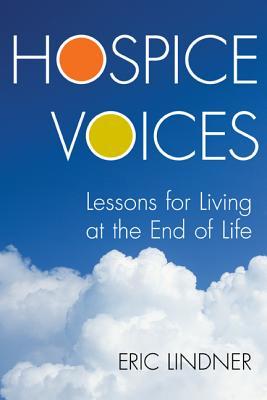Hospice Voices: Lessons for Living at the End of Life
- By Eric Lindner
- Rowman & Littlefield
- 232 pp.
- Reviewed by Dave Sterrett
- December 24, 2013
A touching memoir about death that reveals the author's own journey of personal growth.

Even though author Eric Lindner has lived a Hemingwayesque life schmoozing with U.S. presidents, fighting bulls in Spain and dealing with Russian oligarchs, the most fascinating people he’s ever met have been given a terminal diagnosis and live in a semi-rural county in Virginia. Lindner’s touching memoir of his time as a hospice volunteer reveals his own journey of personal growth and gently encourages the reader to engage in this noble endeavor.
Lindner’s task is daunting. He attempts to make the last few weeks or months of someone’s life interesting. This is difficult in two respects. First, it makes readers examine their own mortality, which people generally try to avoid at all costs. Second, the end of a terminal patient’s life is an unglamorous time full of rapidly deteriorating bodies and minds. Definitely not the natural subject matter for a Hollywood blockbuster. And yet, Lindner succeeds in making his hospice experience not just accessible but engrossing.
The people he meets are extremely varied. One patient speaks six languages and worked for USAID in Thailand, Indonesia, and Egypt. Another worked for the CIA, while a third was one of Paul Mellon’s gardeners. Yet another was born in a teepee. Lindner encounters people from all different racial, economic and social backgrounds, which gives readers a wide array of perspectives on 20th-century America and reminds us that death does not discriminate.
Lindner does not sugarcoat the experience, which is both intellectually honest and helpful for those who might consider following in his footsteps. Monotony and tragedy accompany the work. Some of the patients do not want to talk to him; others die very quickly. The loss of each patient — even those Lindner had never met — touches him deeply, reminding him of the sanctity of all life.
The author’s clever methods of connecting with patients could be applied in other realms besides hospice. His approach starts with food. He explains, “Once our nasal passages and diaphragms have opened, our taste buds are bubbling, our jaws are chewing, our throats are swallowing, and digestion has begun — we can relax. Once survival is assured, and the hunting and gathering is over, people open up and can really communicate.” Lindner then sits back and listens to the patients and learns immeasurable lessons.
Most significantly, Lindner learns to empathize, which brings some amazing changes in his life. The USAID officer teaches Lindner to be grateful for our obstacles by explaining how losing the sight in one eye inspired the officer to help those with cataracts in Vietnam. The Native American woman’s love of her tribal homeland motivated Lindner to reach out to his estranged son. The book is full of these sorts of anecdotes and life lessons. The perspective he gains from his hospice experience prompts Lindner to become a better parent and a more engaged son, as well as make other significant adjustments that benefit his health and well-being. He begins to understand that the most important aspect to life is its quality rather than its quantity.
At times the book gets bogged down in details that are neither relevant nor engaging. Some of his anecdotes are less than spellbinding. But these deficiencies do not lessen the impact of the book or its message. The last emotion that hundreds of thousands of terminally ill Americans experience is loneliness. Get out there and help fill that void; you will benefit from it as well.
Dave Sterrett is the health care counsel for Public Citizen, where he works to protect consumers from unsafe drugs and devices, preserve Medicare, and provide universal healthcare coverage.

